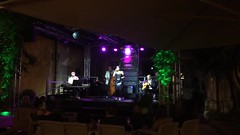Video: A day at El Bulli | Life and style | guardian.co.uk
A day at El Bulli
Observer food writer Jay Rayner travels to Spain’s legendary restaurant El Bulli to meet Ferran Adriá, widely regarded as the world’s greatest chef.
Read the article, watch the video interview. Actually, it’s not much of an interview, but you get the idea of Adriá’s work at El Bulli: analyze, deconstruct, reassemble.
- Analyze a recipe, a famous dish;
- Deconstruct it in its pieces;
- Reassemble the dish with different ingredients/shapes/cooking styles, so that it either resembles the original in the looks or in the flavors/textures.
I find all this fascinating, even though I won’t be able to try his creations out for a while: for the scarcely 6,000 seats a year, there are almost 2 million reservations! The price, of course, is of no importance…
I find in all this a fascinating analogy with our work in higher education. The point is this:
- He spends his time researching, disassembling and reassembling in diverse forms the raw materials of his cuisine. His kitchen is a lab; his sous-chefs are his apprentices.
- His work is risky: some dishes might not be liked at all!
- He concentrates on the most important things of his production: flavor and form.
- His work in the kitchen doesn’t generate enough money: to finance it (and himself) he needs to do sell things: books, materiales, etc.
- Uses state-of-the-art technology, including technology not usually adopted in the kitchen!
- Still, he is honored by peers and clients as the best chef in the world.
Doesn’t it seem like the to-do list of the perfect would-be instructor-researcher?
- Disassemble classes and courses which are currently done in one particular way only to fit some arbitrary administrative model.
- Look into the raw curricular materials, possibly generate new ones; reassemble them in new ways. Schank disassembles and reassembles entire classes based on a particular project. When students complete one project, they have “passed” a few classes.
- Research! Use a class to research, build and learn. I’m not often successful with this… but I need to try.
- Some courses, lessons, etc. might not be successful! They might not be liked at all by students or administrators! Or, they might simply be the product of mistakes.
- Work in class isn’t enough. We have to get out, because we need more money, and because we need to learn from the outside.
- Use state-of-the-art tech! Go with the Web 2.0!
- You may not get recognition, but you’ll have a nice life!



